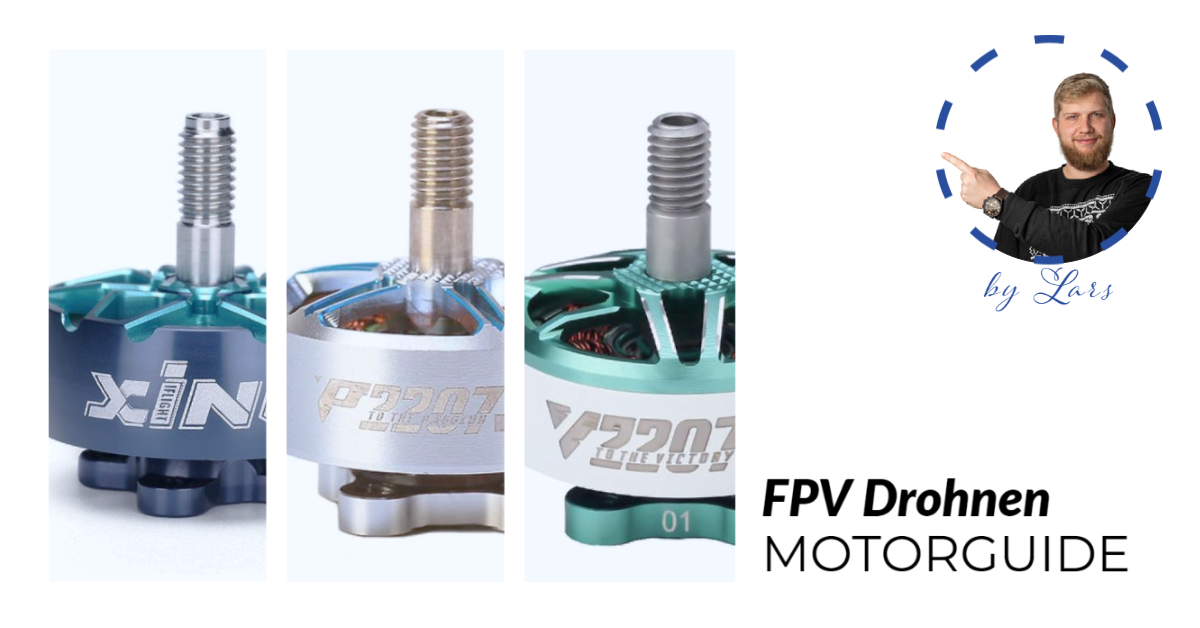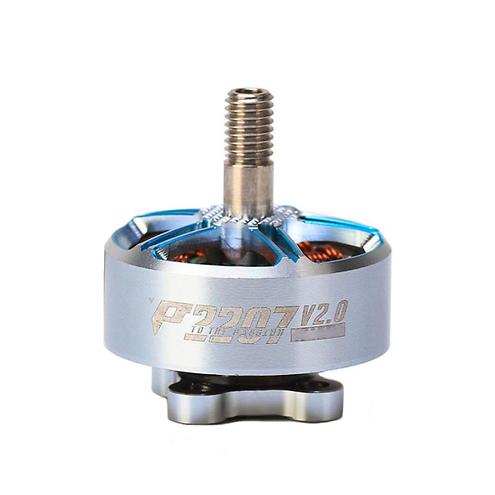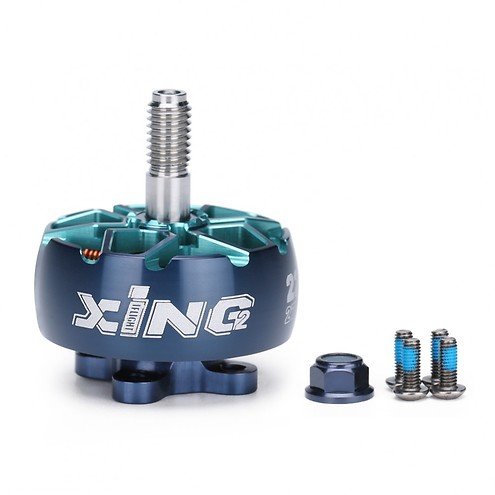
Hello,
this is Lars aka shnlls.fpv!
You want to build a new copter or upgrade your existing copter? This guide will give you a brief overview of the options you have when choosing new motors and a few motor recommendations from me.
4S or 6S?
The first question is whether you want to use 4S (16.8V) or 6S (25.2V) Lipos. All components for 4S are usually a little cheaper, but offer slightly less power. 6S, on the other hand, offer more power or a little more flight time. For beginners, it is always advisable to start with 4S.
You also have another option: choose a 4S motor that can also handle 6S and watch our video about 6S Lipos on a 4S copter. Then you can use 6S Lipos on your 4S motors. The XING2 motors from iFlight, for example, are suitable for this.
 |
 |
 |
 |
|
iFlight XING2 2207 1855KV 6S FPV motor |
iFlight XING2 2207 2755KV 4S FPV motor |
iFlight XING2 2306 1755KV 6S FPV motor |
iFlight XING2 2306 2555KV 4S FPV motor |
Which motor size?
The two most common motor sizes are 2207 and 2306, but what do these numbers mean? Some time ago we published an article on the subject of brushless motors. But here is the most important information in brief: FPV brushless motors consist of a stator and a rotor. The stator contains the windings and the ball bearing. The rotor is the motor gloke, which contains the magnets and later performs the actual rotation.
The number combination 2207 indicates the size of the stator in millimeters. The 22 stands for the diameter of the stator and 07 for the height. 2207 motors usually have more power compared to 2306 motors due to the larger stator volume. In contrast, 2306 is usually said to have better response behavior.
However, the differences are usually very small and you have to try out what you personally like better. Furthermore, the differences in performance depend not only on the stator volume, but also on the magnets used, the copper quality of the windings, the material of the stator core and the gap between the stator and rotor.
In addition, there are many variants, such as 2208, 2207.5 or so-called "pancake motors", i.e. very flat but very wide motors.
What is the KV value?
Have you decided on 4S or 6S and a corresponding motor size? Then the next step is to determine the desired KV value. Put simply, the KV value indicates how much speed the motor can produce per volt. However, the value is only a manufacturer's specification and refers to the speed without the propeller.
A higher KV value can turn faster, but will also reduce your flight time.
My motor recommendations
Last but not least, here are a few recommendations:
T-Motor Velox V2 (2207 or 2306)
These are very good motors for beginners or if the copter should not be too expensive.
 |
 |
 |
 |
T-Motor Pacer V2
The Pacer series is like an upgrade of the Velox series from T-Motor. They come with a Unibell - so the engine block is made from one piece. This is intended to produce a smoother flight behavior. Almost all high-quality motors have such a unibell design.
2207: 2550KV / 1750KV / 1950KV
 |
 |
 |
 |
 |
iFlight XING2
The successor to the XING series. Like almost all high-quality motors, they have a Unibell. In addition, only high-quality components were used here. For example, curved N52H magnets, NSK ball bearings and a titanium shaft. Together with the comparatively low price, the XING2 motors are a very good option for a freestyle copter.
 |
 |
 |
 |
Ethix Mr. Steele Silk/ Stout V4
This is the latest version of the Mr. Steele motors. These now also have a unibell design as an upgrade. In addition, a thicker stranded copper wire has been used for the windings, the gap between the rotor and strator has been reduced and much more. These changes should make the motor more efficient and give it more power than the V3.
 |
 |
I hope I was able to help you choose a motor for your next copter!
See you soon,
your Lars!
Related topics:
| blog: Cleaning FPV motors |
Want to stay up to date?
Then subscribe to our FPV24 newsletter now!